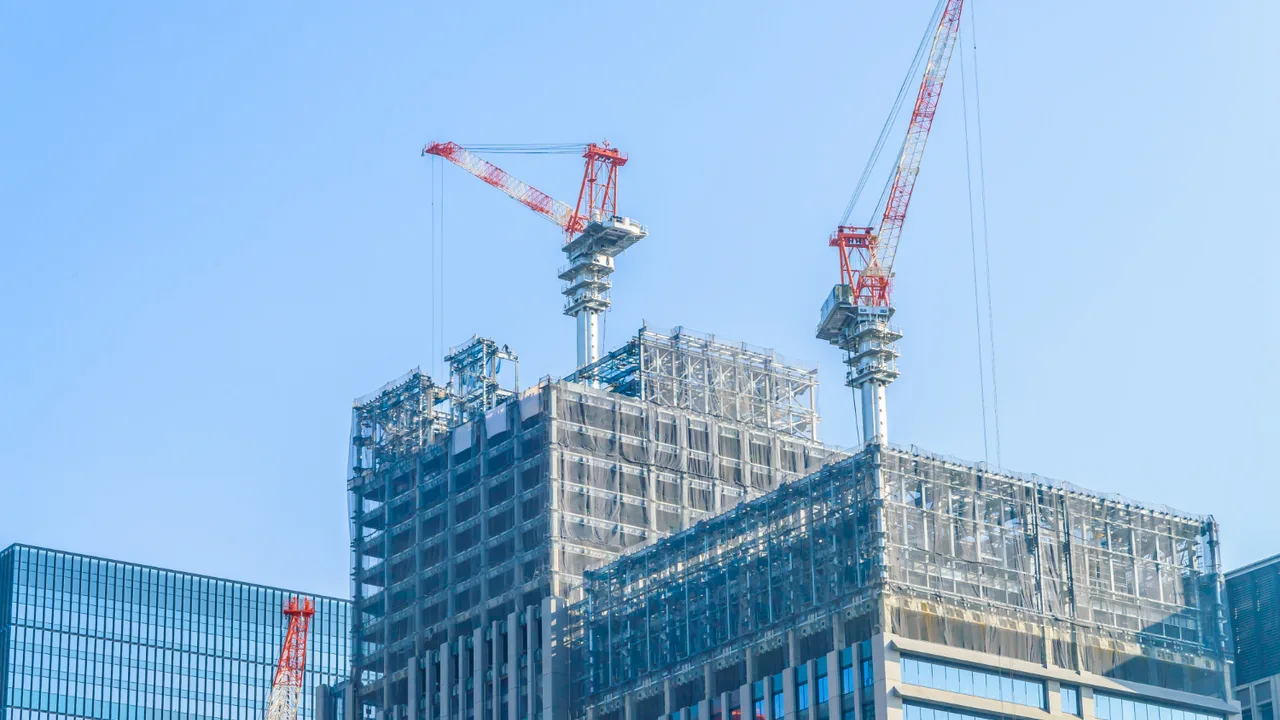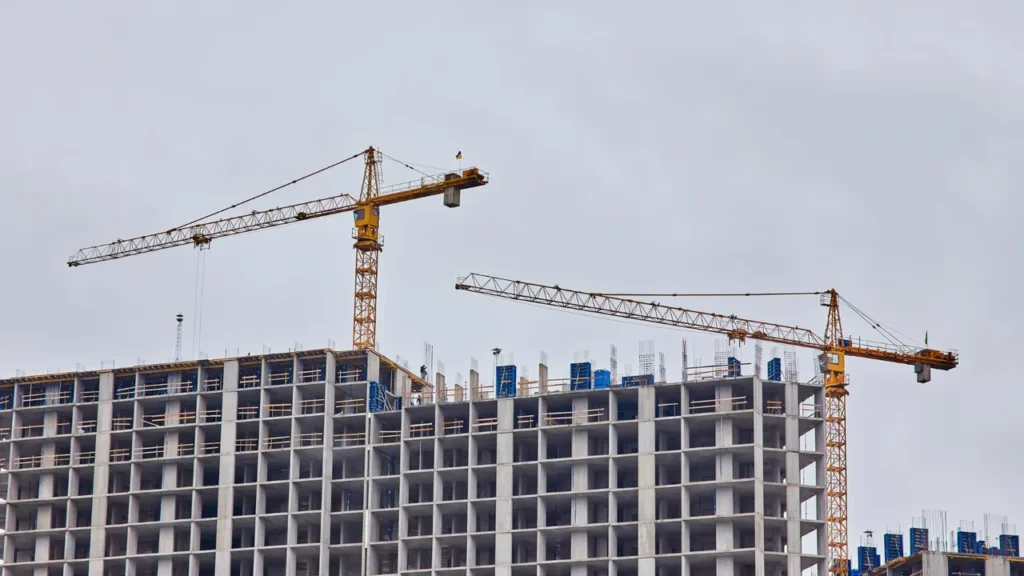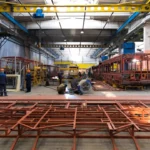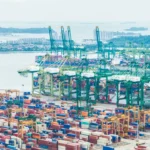Over the past century, high rise construction has become one of the most powerful symbols of urban progress and technological advancement. From the early steel-framed towers of the 20th century to today’s sustainable mega-structures, high-rise projects continue to push engineering boundaries. These towering achievements are not just feats of height but reflections of innovation, precision, and the growing importance of modular construction and smart urban design.
As cities grow denser and land becomes scarcer, architects and engineers are rethinking traditional approaches. Modern skyscraper design now incorporates sustainability, digital planning, and even prefabrication technologies that allow entire building sections to be assembled off-site. This shift toward smarter and more sustainable methods is defining the future of high-rise construction across the globe.
Understanding the Fundamentals of High-Rise Construction
Before diving into advanced techniques, it’s crucial to understand what makes high rise construction unique. A high-rise structure typically exceeds 75 feet in height, requiring specialized systems for vertical transportation, safety, and stability. Engineers must account for gravity loads, lateral forces such as wind and seismic activity, and material performance over time.
The backbone of any tall structure lies in its core. Reinforced concrete, structural steel, or a hybrid of both are commonly used to form the building’s frame. Each system offers distinct advantages: concrete provides superior stiffness and fire resistance, while steel allows for lighter structures and faster assembly. The choice often depends on regional standards, design codes, and project objectives.
Urban density and architectural ambition further shape how skyscrapers are designed. For example, in densely populated areas like Hong Kong or New York, efficient floor space, wind resistance, and vertical integration of mixed-use spaces are top priorities. The combination of engineering strength and design creativity allows modern towers to achieve both beauty and resilience.
Advanced Materials Revolutionizing the Skyline
Materials play a defining role in modern high rise construction. The evolution from standard steel and concrete to high-strength alloys and composite systems has dramatically enhanced performance. Modern skyscrapers use high-performance concrete that can withstand compressive strengths exceeding 100 MPa, reducing column sizes and maximizing usable space.
One of the most transformative trends is the use of modular towers and prefabricated units. These structures are partially built off-site in controlled environments, ensuring consistent quality while reducing waste and construction time. Prefabrication also minimizes on-site disruption—an important advantage in busy urban centers.
Another innovation lies in the rise of smart materials. For instance, self-healing concrete can repair minor cracks automatically, while energy-efficient glass helps regulate indoor temperature and reduce energy consumption. These advancements not only improve building performance but also contribute to sustainability goals, reducing the overall carbon footprint of modern skyscraper projects.
Modern Techniques for Vertical Construction
The success of any high rise construction project depends on the efficiency and precision of its building techniques. Modern contractors rely on methods like core and shell construction, jumpform systems, and Building Information Modeling (BIM) to coordinate every stage of development with unmatched accuracy.
Core and shell construction focuses on creating the building’s main structure and envelope first, leaving interior spaces flexible for future customization. This approach accelerates timelines and provides adaptability for mixed-use buildings. Meanwhile, jumpform and slipform systems allow rapid vertical progress by enabling continuous casting of concrete cores—vital for skyscrapers exceeding 50 stories.
Automation is another frontier in today’s skyscraper design. Drones are now widely used for real-time inspections, site mapping, and progress tracking. Robotic welders and 3D printers handle complex fabrication tasks with precision and safety, significantly reducing labor risks.
Building Information Modeling (BIM) has become the digital backbone of large-scale projects. It allows teams to visualize and coordinate every component, reducing clashes, optimizing cost, and improving sustainability outcomes. When combined with digital twins—virtual replicas of buildings—engineers can simulate structural behavior and anticipate potential issues before they occur.
Examples of Modern High-Rise Techniques
- Prefabricated Core Modules: Used in modular towers to streamline assembly and ensure consistent quality.
- Climbing Formwork Systems: Enables the rapid construction of reinforced concrete cores for skyscrapers.
- Top-Down Construction: Allows simultaneous excavation and superstructure work, saving months of project time.
- Robotic Installation: Automated façade systems enhance precision while reducing human risk at extreme heights.
Innovations in Skyscraper Design
Design innovation is what turns a structure into an icon. Today’s skyscraper design merges engineering intelligence with aesthetic appeal, balancing form and function. Architects are increasingly adopting aerodynamic shapes to counter wind loads and reduce oscillations at great heights. Computational design tools and parametric modeling enable rapid exploration of thousands of structural and aesthetic variations.
Modern skyscrapers are no longer just office towers—they are vertical ecosystems combining residential, commercial, recreational, and green spaces. These buildings emphasize human-centered design, daylight optimization, and environmental performance. Many of them integrate renewable energy technologies, such as solar panels and wind turbines, to generate on-site power.
For instance, the skyscraper evolution in cities like Singapore, Tokyo, and Dubai highlights how technology and sustainability now coexist. Flexible layouts, intelligent HVAC systems, and energy-responsive façades make these buildings living organisms that adapt to their environments.
Moreover, advances in digital fabrication and robotic construction have turned complex geometries into feasible realities. The results are towers that are lighter, stronger, and more sustainable than ever before.
The Role of Modular Towers in Modern Construction

One of the most groundbreaking advancements in high rise construction is the rise of modular towers. This innovative approach relies on the off-site fabrication of standardized building modules, which are later transported and assembled on-site like massive Lego blocks. Unlike traditional skyscrapers that require long construction timelines, modular systems offer speed, precision, and cost efficiency.
The process begins with digital design and coordination. Using advanced BIM software, engineers plan every module—walls, floors, and even utilities—to fit perfectly during on-site assembly. Each unit is constructed in a controlled factory setting to ensure accuracy and quality consistency. Once completed, the modules are stacked and bolted together on-site, allowing construction to advance floor by floor in record time.
Advantages of Modular Tower Construction
- Speed: Off-site manufacturing and parallel on-site foundation work can reduce total construction time by up to 50%.
- Cost-Efficiency: Factory-controlled production minimizes material waste and labor costs.
- Quality Control: Standardized modules ensure consistent quality and structural precision.
- Reduced Disruption: Ideal for dense urban environments where noise, traffic, and dust control are major concerns.
A landmark example is the 57-story modular skyscraper built by China’s Broad Group in Changsha, which was completed in just 19 days. This project demonstrated how modular innovation can revolutionize the pace and efficiency of high rise construction. Beyond speed, modular techniques support sustainability by enabling precise material use and facilitating future disassembly or relocation of components—an emerging concept known as “circular construction.”
Challenges and Risk Management in High-Rise Projects
Despite remarkable advancements, high rise construction continues to face unique challenges that demand meticulous planning and risk management. As buildings grow taller, so do the engineering complexities associated with wind loads, seismic forces, and foundation design. Maintaining stability and occupant comfort in extreme conditions requires advanced simulations, material testing, and real-time monitoring systems.
Key Challenges in Modern High-Rise Projects
| Challenge | Impact | Modern Solutions |
|---|---|---|
| Wind Resistance | Causes structural sway and occupant discomfort | Aerodynamic designs, tuned mass dampers, and wind tunnel testing |
| Seismic Activity | Risk of collapse in earthquake-prone regions | Flexible joints, shock absorbers, and base isolation systems |
| Fire Safety | Rapid fire spread in vertical shafts | Compartmentalized designs, fireproof materials, and smart sprinklers |
| Foundation Settlement | Uneven load distribution leading to cracks or tilting | Deep pile foundations and continuous geotechnical monitoring |
Technology has become an indispensable tool in mitigating these risks. Engineers now use digital twins to simulate real-world conditions, predicting how a tower will respond to environmental stresses over decades. Meanwhile, IoT-enabled sensors embedded in the building’s structure continuously monitor vibration, temperature, and load distribution—alerting maintenance teams before issues escalate.
Additionally, new safety standards are reshaping construction practices. Many international building codes now require advanced fireproofing systems, vertical escape routes, and real-time monitoring of critical systems. By combining regulatory compliance with innovation, engineers ensure that every aspect of skyscraper design aligns with long-term resilience and safety.
The Future of High-Rise Construction
The future of high rise construction lies at the intersection of automation, sustainability, and artificial intelligence. With urban populations soaring, the need for vertical expansion will only intensify—and so will the demand for smarter, greener, and more efficient building methods.
Smart skyscrapers are already redefining the built environment. Equipped with IoT networks, AI-driven climate control, and predictive maintenance systems, these buildings can adapt in real-time to occupancy patterns and weather conditions. By optimizing energy use and reducing emissions, they represent a major step toward carbon-neutral urban living.
Emerging Trends Shaping the Industry
- AI-Driven Design: Artificial intelligence enables instant optimization of structural systems, layouts, and materials.
- 3D Printing: Additive manufacturing of façade panels and structural components reduces waste and fabrication time.
- Vertical Agriculture: Integration of indoor farms within skyscrapers promotes urban food sustainability.
- Renewable Integration: Wind turbines, solar façades, and rainwater harvesting systems built directly into tower designs.
Moreover, new materials such as carbon-fiber composites and graphene-enhanced concrete could redefine performance benchmarks in the next decade. Their strength-to-weight ratios allow for slimmer profiles and increased flexibility—two crucial features for ultra-tall designs.
Another promising concept is “biophilic design,” where greenery, natural light, and organic shapes are integrated throughout skyscrapers to enhance mental well-being and air quality. Combined with modular assembly and digital manufacturing, the skyscrapers of the future will not only rise higher but also function as self-sustaining ecosystems.
Conclusion: Building Higher, Smarter, and Greener
The era of high rise construction has evolved far beyond structural height—it now embodies intelligence, sustainability, and innovation. From modular towers that cut timelines in half to digital twins that monitor structural health in real-time, the industry is redefining what’s possible in modern construction.
Today’s skyscraper design represents the perfect synergy between technology and creativity. As cities continue to expand vertically, the success of future projects will depend on how effectively designers and engineers embrace sustainable materials, modular systems, and data-driven construction practices.
Ultimately, the future of high-rise development is not just about reaching the clouds—it’s about creating a built environment that’s stronger, smarter, and greener for generations to come.



